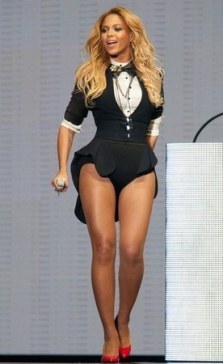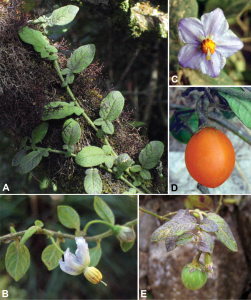Richard Conniff's Blog, page 97
January 20, 2012
Special Offer: Swimming With Piranhas
My publisher is planning to get rid of the hardcover copies of my book Swimming With Piranhas at Feeding Time: My Life Doing Dumb Stuff with Animals, and I am able to order them at cost. I have to tell them how many copies I want by Monday morning. So for orders placed through this weekend only, I am offering a special deal. All offers include shipping & handling (sorry, U.S. delivery only):
A hardcover copy of Swimming With Piranhas at Feeding Time, for $6
A hardcover copy of Swimming With Piranhas at Feeding Time PLUS a hardcover copy of my book The Ape in the Corner Office, for $8.95
A hardcover copy of Swimming With Piranhas at Feeding Time PLUS a paperback copy of my book The Natural History of the Rich: A Field Guide, for $8.95
All three books for $10.95
Email your order to richardconniff@comcast.net and include your address so I can copy and paste it onto a label. I'll confirm your order with an address for your check.
Here's what reviewers had to say about Swimming With Piranhas at Feeding Time:
"Field naturalist Conniff's animal adventures … are so amusing and full color that they burst right off the page … a quick and intensely pleasurable read." Seed Magazine
"Hilariously informative…This book will remind you why you always wanted to be a naturalist." Outside Magazine
"Richard Conniff's account of his adventures travelling the globe with researchers studying animal behaviour is as entertaining as the title suggests." New Scientist
"Richard Conniff writes with vibrancy and verve. His prose crackles with the leaves on an African savannah and shimmers with the sun on a Louisiana bayou." Sacramento Book Review
"Frequently hysterical and always compelling essays." The Day (New London, CT)
"Animal lovers will enjoy these true tales of adventure that make you laugh aloud or gasp in fear." The Daily Star (Oneonta, NY)
"Bright entertainment from a great explainer of the lives of animals." Kirkus Reviews
"Conniff's poetic accounts of giraffes drifting past like sail boats, and his feeble attempts to educate Vervet monkeys on the wonders of tissue paper will leave your heart and sides aching. An excellent read." BBC Focus Magazine








January 19, 2012
The Soft, Slow, Deadly Flight of Owls
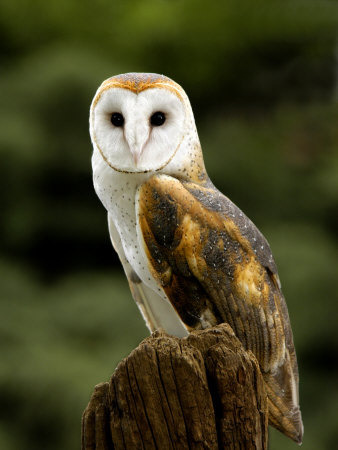 Owls need to wing down through the dark almost silently, to hear–and avoid being heard by–their prey. They have to be good because a barn owl, for instance, needs to find and eat about six vole-sized rodents a night. The secret of their extraordinary stealth lies in their ability to fly slowly, according to Thomas Bachmann, from the Technical University Darmstadt in Germany. He presented his study of barn owl wings at the Society for Integrative and Comparative Biology's annual meeting in Charleston, South Carolina. BBC Nature reports:
Owls need to wing down through the dark almost silently, to hear–and avoid being heard by–their prey. They have to be good because a barn owl, for instance, needs to find and eat about six vole-sized rodents a night. The secret of their extraordinary stealth lies in their ability to fly slowly, according to Thomas Bachmann, from the Technical University Darmstadt in Germany. He presented his study of barn owl wings at the Society for Integrative and Comparative Biology's annual meeting in Charleston, South Carolina. BBC Nature reports:
To find out how they managed to fly so slowly and quietly, Dr Bachmann examined the birds' wings in minute detail.
He examined the plumage and took 3-D medical scans of their skeletal structure.
The wings' most important features, he explained, were the high curvature or "camber" … This curvature means that each wing beat produces more lift.
Air flow is accelerated over the upper surface the curved wing. "So the pressure drops," he said. "[And] the wing is sucked upwards into the lower pressure on the upper wing surface."
The fine feathery fringes of each wing also help silence the owl's flightThe feathery edges of each wing are also extremely fine – reducing any loud turbulence during flight, explained Dr Bachmann.
"Friction noise between single feathers is also reduced [by] their velvety surface," he told BBC Nature.
In fact, Dr Bachmann explained, "all the body parts of the owl are covered by very dense plumage – owls have more feathers than other similarly sized birds".
This soft, dense plumage absorbs other sounds the birds make as they fly.
It turns out Bachmann is interested in barn owl flight mainly as a model for biomimicry in aviation engineering. Here's part of the extract for one of his recent papers:
Barn owl feathers at the leading edge of the wing are equipped with comb-like structures termed serrations on their outer vanes. Each serration is formed by one barb ending that separates and bends upwards. This structure is considered to play a role in air-flow control and noise reduction during flight. Hence, it has considerable potential for engineering applications, particularly in the aviation industry. Several publications have reported possible functions of serrations at artificial airfoils. However, only crude approximations of natural serrations have so far been investigated … Confocal laser scanning microscopy was used for a three-dimensional reconstruction and investigation with high spatial resolution. Each serration was defined by its length, profile geometry and curvature. Furthermore, the orientation of the serrations at the leading edge was characterized by the inclination angle, the tilt angle and the separation distance of neighboring serrations. These data are discussed with respect to possible applications of serration-like structures for noise suppression and air-flow control.
For more about barn owls, visit http://www.barnowltrust.org.uk








January 18, 2012
Powerful People Live Large
 I've written before about how the experience of power changes people. It's also, in large part, the subject of my books The Natural History of the Rich and The Ape in the Corner Office.
I've written before about how the experience of power changes people. It's also, in large part, the subject of my books The Natural History of the Rich and The Ape in the Corner Office.
Now a new study finds that the psychological experience of power makes people feel taller than they are. The paper begins with snarky promise, quoting BP Chairman Carl-Henric Svanberg, who was referring to the victims of the largest oil spill ever when he said "We care about the small people." Here's how the paper starts:
Height is an oft used metaphor for power: Powerful people "feel like the big man on campus" and "people look up to them." Development psychologists have suggested that a metaphorical association between power and height may take root very early as, for instance, children are confronted with taller parents who have power over them and during adolescence taller children use their strength to physically coerce smaller children. This association continues to be reinforced as taller people earn higher salaries, are more likely to be found in
higher status occupations, to emerge as leaders and to win presidential elections.
But even if they are not taller to start with, people who get power quickly come to share that high-and-mighty feeling. Here's the press release from Washington University:
"Although a great deal of research has shown that more physically imposing individuals are more likely to acquire power, this work is the first to show that powerful people feel taller than they are," says Michelle M. Duguid, PhD, assistant professor of organizational behavior at Olin Business School.
Duguid is co-author, with Jack Concalo, PhD, of Cornell University, of "Living Large: The Powerful Overestimate Their Own Height," published in the current issue of the journal Psychological Science.
In a series of three experiments, the researchers found a definite correlation between feeling powerful and feeling tall, and even suggest that future research may want to examine whether employers should consider placing short high-ranking workers in higher offices to raise their psychological sense of power.
"Height is often used as a metaphor for power," Duguid says. "Powerful people 'feel like the big man on campus,' and people 'look up to them.' We find that the psychological experience of power may cause individuals to feel taller than objective measurement indicates they really are."
In the researcher's first experiment, some participants were asked to recall an incident in which they had power over another individual while others were asked to recall an incident in which someone else had power over them.
They were then asked to estimate their size in relation to a pole that had been set precisely 20 inches taller than their actual heights.
Those who had been conditioned to feel 'empowered' thought the pole was nearer in height to them than those who'd been made to feel subordinate.
In the second experiment, two pairs of volunteers were asked to role play a scenario in which one was a manager and the other an ordinary worker.
They were then asked to give their exact heights in a questionnaire, with those having played the role of manager supplying exaggerated figures.
Finally, the participants were conditioned in the same way as they were in the first experiment, and then asked to choose an avatar in a second-life game that they thought best represented them. The more empowered volunteers consistently chose taller avatars.
"These findings may be a starting point for exploring the reciprocal relationship between the psychological and physical experiences of power," Duguid says. "An interesting direction for future research would be to determine whether associations between power and size extend to other self-perceptions and self-categorization."
Duguid, Michelle M. and Goncalo, Jack A., "Living Large: The Powerful Overestimate Their Own Height" (2011). You can read it here.








January 16, 2012
How Livestock Feed Spreads Deadly Drug Resistance
For more than 50 years, livestock producers have been fattening their animals on commercial feed laced with antibiotics. Nobody bothered to ask how this treatment worked. Adding antibiotics to livestock feed–28.5 million pounds of the stuff a year, 80 percent of all antibiotic use in this country–was simply a quicker way to get livestock to put on weight, and since added weight meant added profit, that was enough.
A new study being published today changes all that, revealing for the first time how antibiotics alter the ecology of an animal's gut–and also how that inadvertently puts human health at risk by making dangerous pathogens like MRSA resistant to our limited battery of antibiotics.
Among the startling new details: Use of antibiotics almost immediately causes a 20-100-fold increase in one of the most notorious bacterial pathogens, E. coli. The antibiotics also quickly cause bacteria to become resistant even to antibiotics the animals did not actually receive. (It happens through a process called horizontal gene transfer.)
Detailing what happens inside the pig is a key step in the rapidly developing debate about whether to ban the use of antibiotics in livestock feed, as has already happened in Denmark and other countries. Environmentalists and health officials have been voicing their concern about the hazards of our over-reliance on antibiotics for more than 40 years, especially with the appearance of untreatable diseases like MRSA and, just last week in India, totally drug-resistant tuberculosis.
Gut-level science also gives researchers vital information needed to begin finding alternative methods that could enable livestock to grow just as quickly–without antibiotics. The study, by researchers from Michigan State University and the U.S. Department of Agriculture, appears in Proceedings of the National Academy of Science.
Researchers looked at two groups of piglets birthed and reared in tightly-controlled, decontaminated rooms at the National Animal Research Center in Ames, Iowa. Even before the study got underway, they found that both groups already had a substantial reservoir of antibiotic resistance–149 genes' worth–at birth. "The constant selective pressure of 50 years of in-feed antibiotics appears to have established a high background level of resistance in the swine microbiome," the authors remark. From there, it just got worse.
One group of piglets was reared on ASP250, a standard commercial feed containing the antibiotics chlortetracycline, sulfamethazine, and penicillin. The other group received the same feed but without the antibiotics.
The researchers then analyzed the animals' fecal samples to learn how their guts changed after just two weeks. Genetic analysis enabled them to see that antibiotic resistance genes increased in both diversity and number. They were also able to show exactly which kinds (or phyla) of bacteria increased or decreased. For instance, the phylum Proteobacteria increased from just one percent of the population in unmedicated animals to 11 percent in the piglets receiving antibiotics–and most of that change was due to the increase in E. coli. This increase in the bacteria responsible for some of our worst food-borne disease outbreaks presumably occurred because the E. coli were already resistant to antibiotics.
The study also detailed changes in a variety of mechanisms involved in converting energy into muscle. "Taken together," the co-authors write, "the data suggest numerous possibilities for how the swine gut microbiota might be involved with the improved feed efficiency afforded by certain in-feed antibiotics."
Asked whether these results suggest the possibility of manipulating the gut flora of livestock by inoculation or other means, rather than with antibiotics, Tufts University microbiologist Stuart Levy said, "Without a doubt. Just as we do with lactobacillus, and just as we do with probiotic treatments. We have always argued that you don't need to use antibiotics to do this, if only we knew what the antibiotics were doing."
You should be able sometime in the next few days to read the whole study here.
Looft, T., et al (2012) "In-feed antibiotic effects on the swine intestinal microbiome" Proceedings of the National Academy of Science








Singles Ladies and Species Discovery
One of my frustrations in writing The Species Seekers was the shortage of women in the early history of biological discovery. Mary Kingsley was clearly wonderful, but once is never enough. So this morning I was delighted to come across two stories of occasionally cross-dressing women and the discovery of new species.
This is surely the first time this blog has picked up an item from the Australian website CelebrityFix, but in a good cause:
Australian scientists have named a species of horse fly after Beyoncé, because its 'spectacular gold colour' makes it the "all time diva of flies."
The scientist responsible for the fly's superstar name, officially Scaptica (Plinthina) beyonceae, has explained the similarities between the insect and the singer in a CSIRO media release.
"It was the unique dense golden hairs on the fly's abdomen that led me to name this fly in honour of the performer Beyoncé as well as giving me the chance to demonstrate the fun side of taxonomy – the naming of species," said Australian National Insect Collection researcher, Bryan Lessard.
We're hearing 'gold' (hotpants), (luscious)'hair', (toned) 'abdomen', strange(ly attractive) species…yep, sounds like Beyonce to us!
Mr. Lessard also said that while the horse fly is "often considered a pest" they are "extremely important pollinators of plants" and "act like hummingbirds during the day, drinking nectar from their favourite varieties of grevillea, tea trees and eucalypts."
Amazingly, the rare Scaptia (Plinthina) beyonceae was collected in 1981 — the same year Beyoncé was born! Although, it was found in north-east Queensland's Atherton Tablelands, not in the arms of Mathew and Tina Knowles in Houston, Texas.
Amazingly, Beyonce isn't the first star to get a creepy crawly named after her. Check out our totally educational gallery of
And from a more familiar source, Cynthia Graber at 60 Second Science, here's a story about a female species seekers finally receiving her small share of recognition:
Jeanne Baret was passionate about science. So passionate that, in the 1760s, the Frenchwoman disguised herself as a man. She hid her true identity to accompany her lover, botanist Philibert Commerson, on the first French ship to sail around the world. At the time, women weren't allowed on French navy vessels, and general sexism prevented them from working in science.
Commerson was sick for part of the trip, and so Baret accomplished much of the fieldwork on her own. Together the two collected more than 6000 specimens. More than 70 species have been named for Commerson. He intended to name a species after Baret, but he died before he could do so.
."A. Habit B. Flower showing reflexed corolla and bud C. Flower with flat corolla D. Mature fruit E. Immature fruit
Then last year, University of Utah biologist Eric Tepe heard an interview with Baret biographer Glynis Ridley on NPR. The story inspired Tepe to name a species of vine from South America in her honor: . Its leaves are of variable shape, as were the leaves of the species Commerson had intended to name for Baret. S. baretiae's flowers are violet, yellow or white. An exotic species for an unusual woman, who made a mark on science without leaving her name. Until now.
Here's from Scientific American.

January 13, 2012
Games Pigs (and Primates) Play
The notion of Dutch pig farmers being obliged to hang around devising ways to entertain their pigs sounds like something out of Orwell, or maybe PETA's Kafkaesque vision of hell for factory farmers. You can imagine some poor guy in overalls doing his best standup routine ("Two pigs and a priest walked into a bar …"), only to have the displeased or merely bored pigs declare, "We are not amused," followed by 30 days in a box cage.
But according to a recent press release from The Netherlands:
Since 2001, European legislation has made it compulsory for pig farmers to provide entertainment in the pens to combat boredom, aggression and tail biting amongst pigs, which will hopefully eliminate the need for routine tail-docking. Farmers have been experimenting with all kinds of materials and games, but in practice it proves difficult to provide the animals with an adequate challenge.
And now, to the rescue, just as the impatient pigs are about to declare "Off with their heads," come the amusing folks at the Utrecht School of the Arts (HKU) and Wageningen University and Research Centre, with a computer game that allows pigs and people to play together. "Pig Chase" employs what looks like a huge widescreen tv in the rearing pen with light effects that enable the pigs to interact with a human player, who uses an iPad. The press release continues:
Not just people but also pigs like to play. It was already known that pigs are capable of mastering a simple computer game, for example. The innovative aspect of this research is the idea of getting people and pigs gaming together. Thereby they might offer each other an exciting challenge.
Over the past year, designers Kars Alfrink, Irene van Peer and Hein Lagerweij — who are affiliated with the HKU research group Creative Design for Playful Impact –the philosopher Clemens Driessen from Wageningen University and animal welfare specialist Marc Bracke from Wageningen UR Livestock Research have been working on a computer game for pigs. Their aim is to fulfil the pigsʼ need to play, and find out whether a different relationship can be founded with humans.Pig farmers and their pigs have also been closely involved in the design process.
This means they have been helping to create the game by reacting more or less
enthusiastically to gaming elements in the test phase. The farmers were charmed by the video images to be projected on the wall. The designers then found out that the pigs were also interested in light effects and followed them with their snout. On this basis, they made a video sketch presenting the set-up of the game. The game is called ʻPig Chaseʼ. The human players in the game can steer a light effect on the wall of the pen. The idea is to capture the curious pigsʼ attention and move the light towards targets.
The current game, Pig Chase, is primarily intended as a concept to be elaborated
upon to produce various versions. The value of the game as entertainment for pigs is unclear as yet. Clemens Driessenʼs research, which is part of the NWO programme ʻEthics, Research and Managementʼ, focuses on ways in which the development of new technology can be used to increase the depth of societal debates on animal farming issues. Moral views on animal welfare, for example, can change over the course of time, partly under the influence of new technology. A computer game provides a playful way of finding out what is interesting entertainment for pigs and the role people can play in that respect. Could this be a way of improving pig welfare?
The field of human and animal interaction by means of information technology is in its early stages worldwide, but it provides opportunities for forging relationships with animals in new ways, while learning new things about the cognitive capacities of both animals and people.
You can watch the video sketch here

January 12, 2012
The Species Seekers Quiz: Not Just a Naturalist
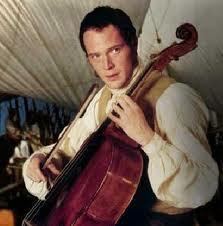
Stephen Maturin, played by Paul Bettany, in "Master and Commander"
In Britain, naturalists typically hitchhiked on military expeditions of discovery and conquest (like Charles Darwin aboard HMS Beagle), and often also served their country in what other role?
1. Musical entertainer.
2. Interpreter.
3. Spy.
4. Guide.
And the answer is[image error]
They were spies.
An interest in natural history provided the perfect training in careful observation–and a plausible cover–for work as a spy. Stephen Maturin, the surgeon/naturalist/ spy in Patrick O'Brian's novels about the British Navy in the early 19thcentury, wasn't entirely a fiction. For instance, Capt. John Biddulph collected over 3000 birds and also spied for the British while traveling in Kashmir, Turkestan, and other Himalayan localities. Likewise, Sir Robert Baden-Powell, founder of the Boy Scouts, disguised maps of enemy fortifications in his drawings of butterfly wing patterns.
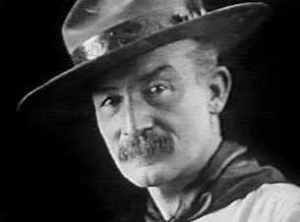
Boy Scout Founder (and Spy) Robert Baden-Powell

January 11, 2012
The Species Seekers Quiz: Inside Jefferson's White House
[image error] What did Thomas Jefferson keep in the East Room of the White House?
1. A collection of mastodon bones.
2. Silver crafted by Paul Revere.
3. The largest library of natural history books in North America.
4. A conference table made of petrified wood.
And the answer is
[image error]
A collection of mastodon bones.
Jefferson sent off a letter, carried by Daniel Boone, to his friend George Rogers Clark, commander of the Army of the West, asking him to collect specimens from Big Bone Lick, a sulphur-smelling patch of marsh near the Ohio River in Kentucky. The first —and only successful— shipment from Clark arrived at the White House in March of 1808. Jefferson had these fossils spread out in a large otherwise unused room that later would become known as the East Room. (It was a step up from John and Abigail Adams, who had hung their laundry there.)

Pinkies Up: Better Brewing Through Panda Poo
I wouldn't care to drink the stuff. But maybe this isn't as crazy as it sounds. We live in a bottom line world, and the business model would seem to require that giant pandas not go extinct. Here's the report from The (UK) Telegraph:
Chinese entrepreneur An Yanshi is convinced that he has found the key ingredient to produce the world's most expensive tea–panda dung.
The former calligraphy teacher has purchased 11 tonnes of faeces from a panda breeding centre to fertilise a tea crop in the mountains of Sichuan province in southwestern China, home to the black and white bears.
An says he will harvest the first batch of tea leaves this spring and it will be the "world's most expensive tea" at almost 220,000 yuan ($35,000) for 500 grams (18 ounces).
Chinese tea drinkers regard the first batch of tea to be harvested in the early spring as the best and successive batches, regarded as inferior, will sell for around 20,000 yuan.
The 41 year-old, who is so passionate about his new project he dressed in a panda suit for his interview with AFP, has been ridiculed by some in China for his extravagant claims of the potential health benefits of the tea.
But he insists he is deadly serious, saying he quit his job at Sichuan University to throw himself "heart and soul" into his company, Panda Tea, whose logo features a smiling panda wearing a bow tie and holding a steaming glass of green tea.
While An hopes to make money from the tea, which he has planted on just over a hectare (2.5 acres) of land, his main mission is to convince the world to protect the environment and replace chemical fertilisers with animal faeces – before it is too late.
"Panda dung is rich in nutrition … and should be much better than chemical fertilisers," An said, as he sat at a traditional Chinese tea table drinking tea grown with cow manure.
"People should make a harmonious relationship with heaven, earth and the environment," An said.
You can read the full article here.
You can also read about the scientific discovery of the panda in The Species Seekers.
And check out The Last Panda by George B. Schaller, where he goes a little batshit on first sighting of wild panda droppings:
"Two pale-green objects lay at the edge of the path, each spindle- shaped and about six inches long and two inches wide. Panda droppings! I knelt and cupped one in my hand. It consisted of undigested pieces of bamboo stem, all neatly aligned and held together with mucus; it smelled sweet, like freshly cut grass. Carefully, I passed the fragile treasure to Sir Peter [Scott], as all the others crowded near to discover the cause for our reverence. Sir Peter and I grinned at each other, tremendously pleased and oblivious to what our hosts might think about our delight in fondling feces. Some days are marked for recollection. 'A grand day, isn't it," commented Sir Peter with British understatement."
And on that note, I must go have a cup of tea. Pinkies up!

January 10, 2012
The Species Seekers Quiz: Wallace's House of Rest
 After spending a dozen years in the tropics and making his reputation as the greatest field biologist of the nineteenth century, Alfred Russel Wallace later gave this name to a house he built:
After spending a dozen years in the tropics and making his reputation as the greatest field biologist of the nineteenth century, Alfred Russel Wallace later gave this name to a house he built:
1. Darwinia, to honor his co-discoverer of the theory of natural selection (though his wife Annie had suggested Wallacea).
2. Umbraculum, from the Latin word for a place of quiet retirement.
3. Tulgey Wood, after a nonsense verse by Lewis Carroll.
4. Birdwing, for his discovery of the spectacular Wallace's golden birdwing butterfly.
And the answer is:[image error]
[image error] .
The worlds of species seeking and nonsense verse were surprisingly interconnected (you can read about it in The Species Seekers, Chapter 13, "A Fool to Nature" ). Wallace was so enamored of Lewis Carroll's work that, late in life, with his travels to the Amazon and the East Indies far behind him, he named a house he built Tulgey Wood, after the haunt of the jujub bird and the frumious bandersnatch in "Jabberwocky":
And as in uffish thought he stood,
The Jabberwock, with eyes of flame,
Came whiffling through the tulgey wood,
And burbled as it came!
Here's a picture of the house at 149 Lower Blandford Road, Broadstone, Dorset, and here's the Google map. Wallace built Tulgey Wood in 1908 as a place for his wife to live after his death, because their home, the Old Orchard, would have been too big for her. Their daughter Violet lived in Tulgey Wood, and Wallace's wife moved in after his death.
And finally, click here to see more of the creatures in jubjub artist David Elliot's excellent menagerie.
Note: This item was originally published in different form. It now incorporates corrections kindly provided by Dr. George Beccaloni



